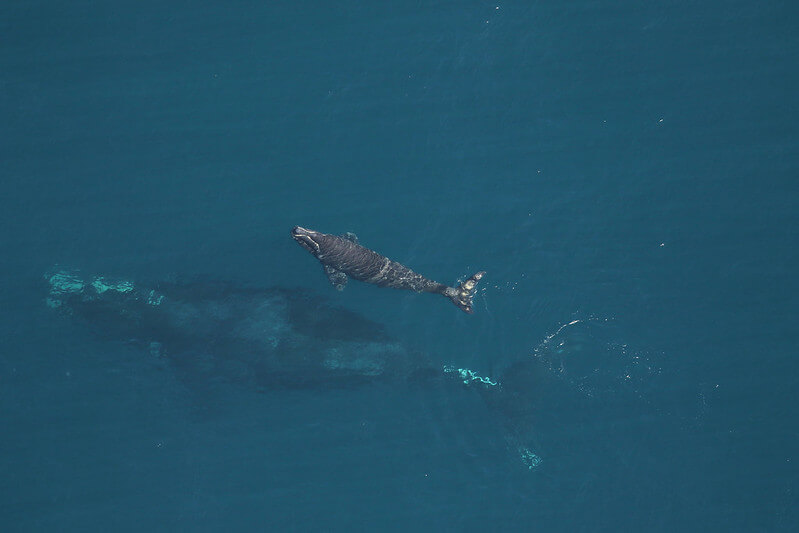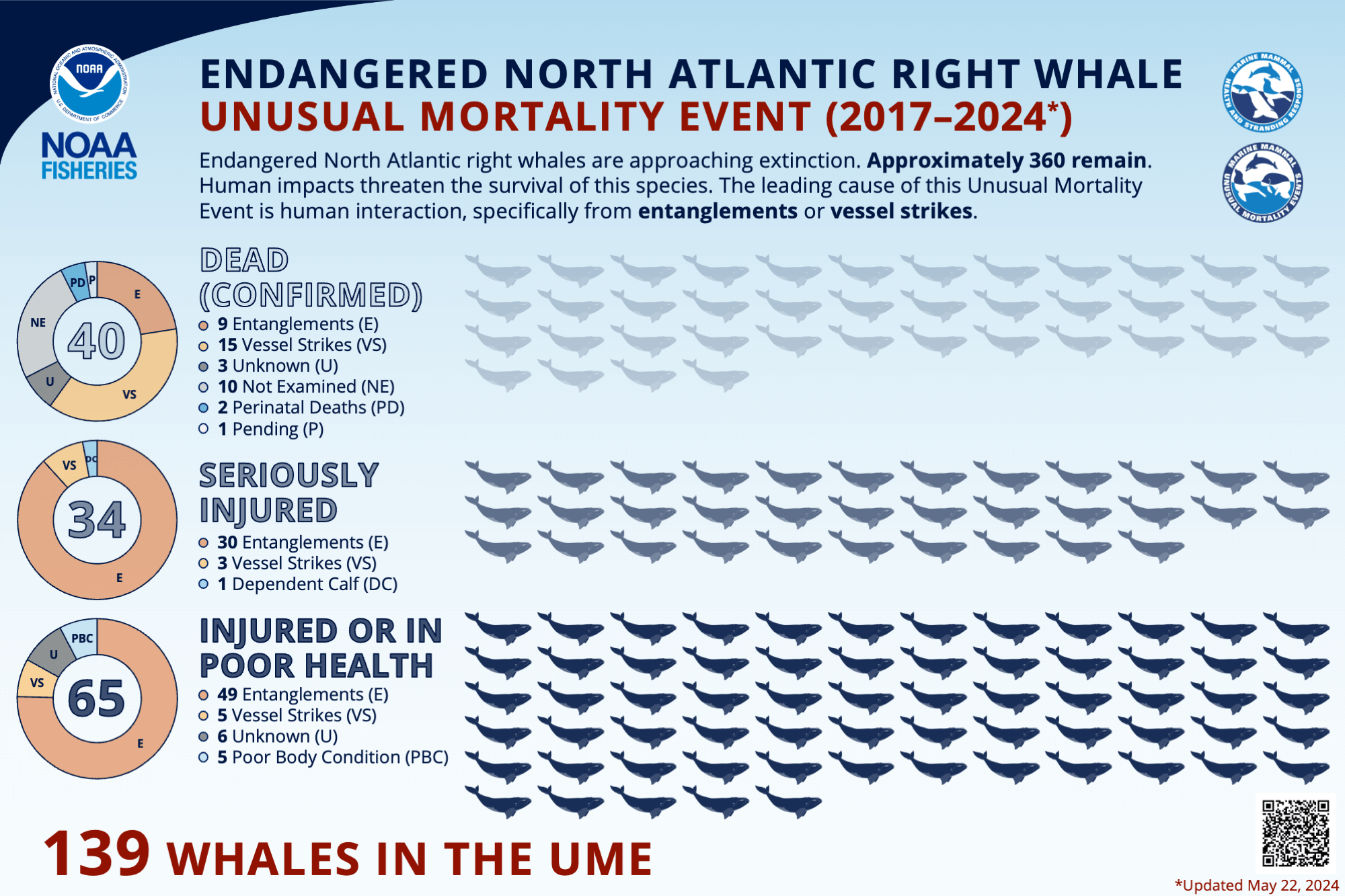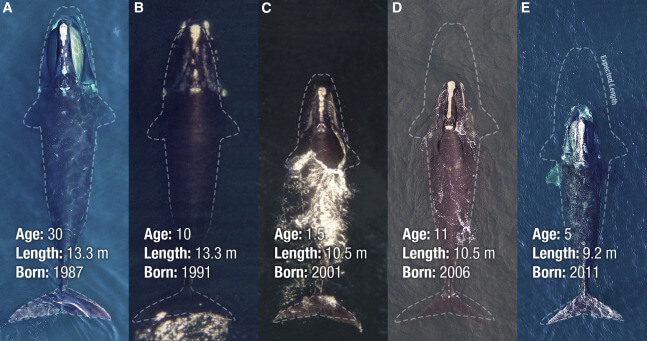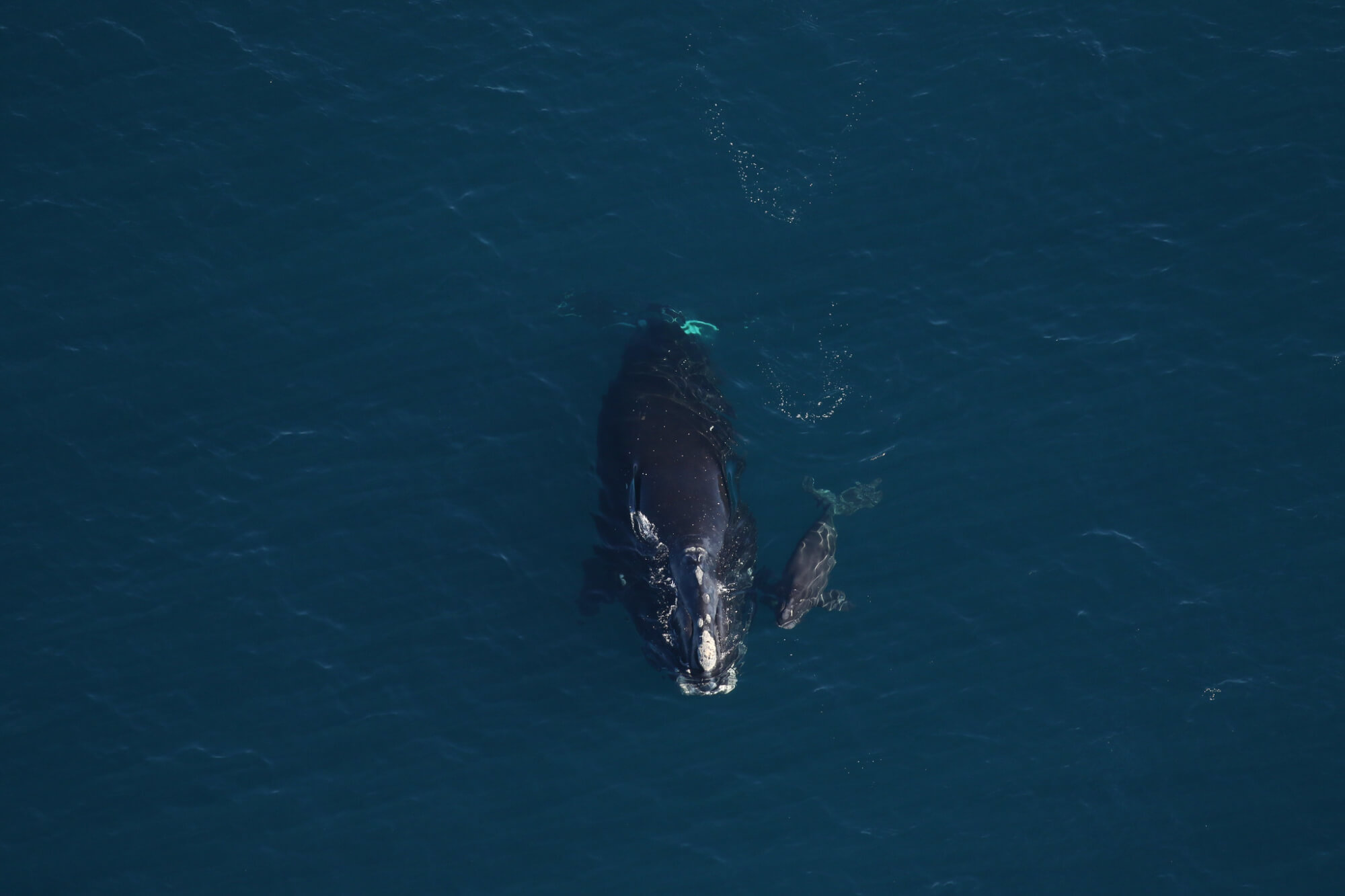The birth rate of North Atlantic right whales is very close to the species’ mortality rate. Classified as endangered for 20 years, the population shows few signs of recovery. But why?
A recent article published in Proceedings of The Royal Society B highlights the devastating impact of entanglements on right whale reproduction. The population of just 70 females of reproductive age faces multiple reproductive challenges. Entanglements, often identified as the primary cause of these incidents, seriously compromise right whale health and reduces the energy they have available for gestation and lactation.
Study of the female life cycle
Over a 41-year period, i.e. from 1977 to 2018, a mark-and-recapture model was used to study four stages of the female North Atlantic right whale life cycle. Stages include pre-breeders (before first parturition), breeders (those in a calving year), experienced non-breeders (mature females between calving years), and dead individuals.
In the study, 199 known aged individuals were tracked through annual surveys. Of these, more than 85% had been entangled at least once in their lifetime.
What's the current situation?
During the most recent calving season, a mere 19 calves were identified, 5 of which are now presumed dead, leaving a total of 14. According to the National Oceanic and Atmospheric Administration, 50 births per year would be needed for the species to begin recovering. The target is far from being reached.
Since 2017, a high number of mortalities, serious injuries or sub-lethal illnesses have been reported among North Atlantic right whales.
How might this high rate of entanglements be correlated with the low number of births tallied every year?
A matter of SIZE!
A collaborative study of 129 North Atlantic right whales noted a decrease in the average size of individuals since the 1980s. Between 1981 and 2019, the average size is believed to have decreased by around 7%. Currently, some 10-year-old whales are the same size as one- or two-year-olds were 40 years ago. Scientists have concluded that entanglements are one of the main culprits behind this phenomenon. An entangled female loses some of her maternal faculties, notably the quantity and quality of milk she produces for her young, whereas lactation is a crucial phase in the growth of a calf. Notably, the most significant size reduction was found in whales whose mothers were entangled while they were nursing.
The study found that this stunted growth has a negative impact on fertility. Smaller females have a lower reproductive output since their birth intervals will be longer than those of larger individuals. It was observed that many females did not have enough fat to breed successfully, which resulted in delayed reproductive capacity.
Larger females tend to give birth to larger calves, hence the importance of reaching a significant size before breeding. Size plays a crucial role in the duration and efficiency of lactation, as well as in the weight of the calf at the time it is weaned and the energy cost for the mother to raise an offspring of such size.
Additionally, sexual maturity will be late in small females, who then have fewer energy reserves to invest in gestation and nursing. To compensate for this, they spend the winter in feeding areas to build up their fat reserves to support future reproduction. This behaviour is often called “skipped breeding partial migration,” because these females do not migrate during non-breeding years.
A disrupted life cycle
When a right whale manages to survive an entanglement, it is certainly a glimmer of hope, but the consequences should not be underestimated. The effects of these incidents extend far beyond the event itself, and they are particularly pronounced with regard to reproduction.
Once they reach sexual maturity, females continually devote energy to reproduction. During gestation, a large part of their energy goes toward maintaining the necessary core body temperature, growth of the fetus, and the placenta. This energy cost increases gradually over the 12 months of gestation, peaking in the last 4 months during which the fetus undergoes exponential growth.
As soon as they arrive in the cold, nutrient-rich waters of their feeding grounds, mothers begin to feed while simultaneously nursing their calves. During this 10- to 12-month nursing period, the calf gains considerable weight. In just over a year, it can put on up to 910 kg, thus doubling its birth weight. The mother, on the other hand, sees her physical condition diminish, since she does not feed in the first few months after calving; she can lose almost a third of her body weight. It takes several years for a female to gain back enough fat to reproduce again.
Climate change has an impact on both the availability and quality of food. Entanglements produce stress, which compromises a whale’s ability to feed, grow and reproduce. For a right whale that survives an entanglement, the energy expended during the incident itself and its subsequent recovery is considerable. Breeding intervals are therefore longer, as females must first recover their energy and health. Their reproductive capacity and success are diminished after such an event. In healthy right whale populations, the reproductive cycle is typically 3 to 4 years. In recent years, birth intervals have exceeded 7 years and sometimes even up to 10 years!
Based on research conducted on sexually mature right whales, those that have been severely entangled have the lowest probability of subsequently reproducing. Individuals having experienced a moderate entanglement are less likely to reproduce than those that have never gotten themselves ensnared. Even those that have survived a minor entanglement are 47% less likely to reproduce than those that never experienced an entanglement.
Some right whales are in a non-breeding phase due to sub-lethal stress caused by entanglement, a common experience for 85% of individuals in the population. Additionally, their smaller size means later sexual maturity, while the increasing scarcity and reduced quality of food due to climate change make it difficult for them to obtain the necessary energy resources. The need for a nursing mother to stay with her calf to ensure its survival underscores the critical impact that the loss of a mother has on calf survival.
Meeting challenges through conservation
The challenges faced by North Atlantic right whales – including entanglement in fishing gear and the impacts of climate change on their diet – call for stronger conservation measures. By improving fisheries management, increasing nutrition research and raising public awareness, we can work together to ensure the survival of these iconic species in the face of mounting pressure from our marine environment.









